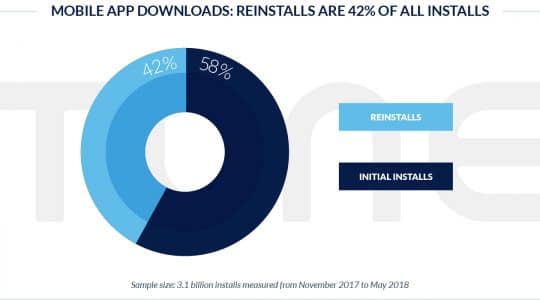
Cookies. Unique Device Identifier. Ad Identifier. Digital Fingerprinting. These are all different tools used by marketers to track the things to do and view on your computer and mobile device. And Apple is again trying to change the tool that marketers can use on their devices.
Have you ever downloaded and opened an app on your iPhone, only to have your phone switch to Safari for a brief moment before finally launching the app? Most likely the app that you’re opening has cookie trackers (sometimes called “HTML5 first party cookies” or “Safari flip-flop”) coded into it. No, not the delicious sugar-filled-dip-in-a-glass-of-milk cookie. These cookies are information stored on your mobile device, and are a holdover of the tracking technology that has been around for your computer for over a decade. It’s a way for marketers to track the sites you view and the ads you click on so they can “customize your ad experience” to be tailored to fit you. Mobile cookie trackers do much the same, but can also track location, app usages, preferences and more. The Safari Flip-Flop is a byproduct of cookie tracking on Apple devices; it can be quite annoying, and thankfully it looks like it might be on it’s way out.
Cookie trackers and UDID
TechCrunch reports hearing from a few different industry sources that Apple’s App Review team has started rejecting apps that use cookie tracking. We’ve not seen an official announcement from Apple on this yet, but the news isn’t surprising. Back in 2011, Apple announced that Unique Device Identifier (UDID for short), which is an alternative to cookie tracking, was going to be phased out and eventually apps using them would be rejected from the App Store. For those developers out there, here’s the official Apple announcement It’s generally believed that Apple decided to phase out UDID in order to start transitioning developers over to their Advertising Identifier technology, which is yet another alternative to cookie tracking and UDID. Since they’re rejecting UDID apps from the App Store, why not start phasing out cookie tracking next?
Apple’s Advertising Identifier
Advertising Identifier was introduced in iOS6, and according to 9to5mac.com is “a non-permanent, non-personal, device identifier, that advertising networks will use to give you more control over advertisers’ ability to use tracking methods. If you choose to limit ad tracking, advertising networks using the Advertising Identifier may no longer gather information to serve you targeted ads. In the future all advertising networks will be required to use the Advertising Identifier. However, until advertising networks transition to using the Advertising Identifier you may still receive targeted ads from other networks.” From a consumer perspective this sounds great, as you can decide which apps can have access to your information and which can’t. However savvy marketers know better than to put all of their efforts into one approach, which is why there are still so many other options for gathering usage and demographic information about their users.
Wrap-up
Developers have been moving away from UDID for some time now, and it looks like they’ll have to start doing the same with cookie trackers This could be tricky for some of the bigger companies like Priceline and Hotels.com who only use cookie tracking with their apps. These companies will have a bit of work ahead of them though if they want to keep up with Apple and the direction they’re steering their technology.
Author
Becky is the Senior Content Marketing Manager at TUNE. Before TUNE, she handled content strategy and marketing communications at several tech startups in the Bay Area. Becky received her bachelor's degree in English from Wake Forest University. After a decade in San Francisco and Seattle, she has returned home to Charleston, SC, where you can find her strolling through Hampton Park with her pup and enjoying the simple things between adventures with friends and family.




Leave a Reply
You must be logged in to post a comment.